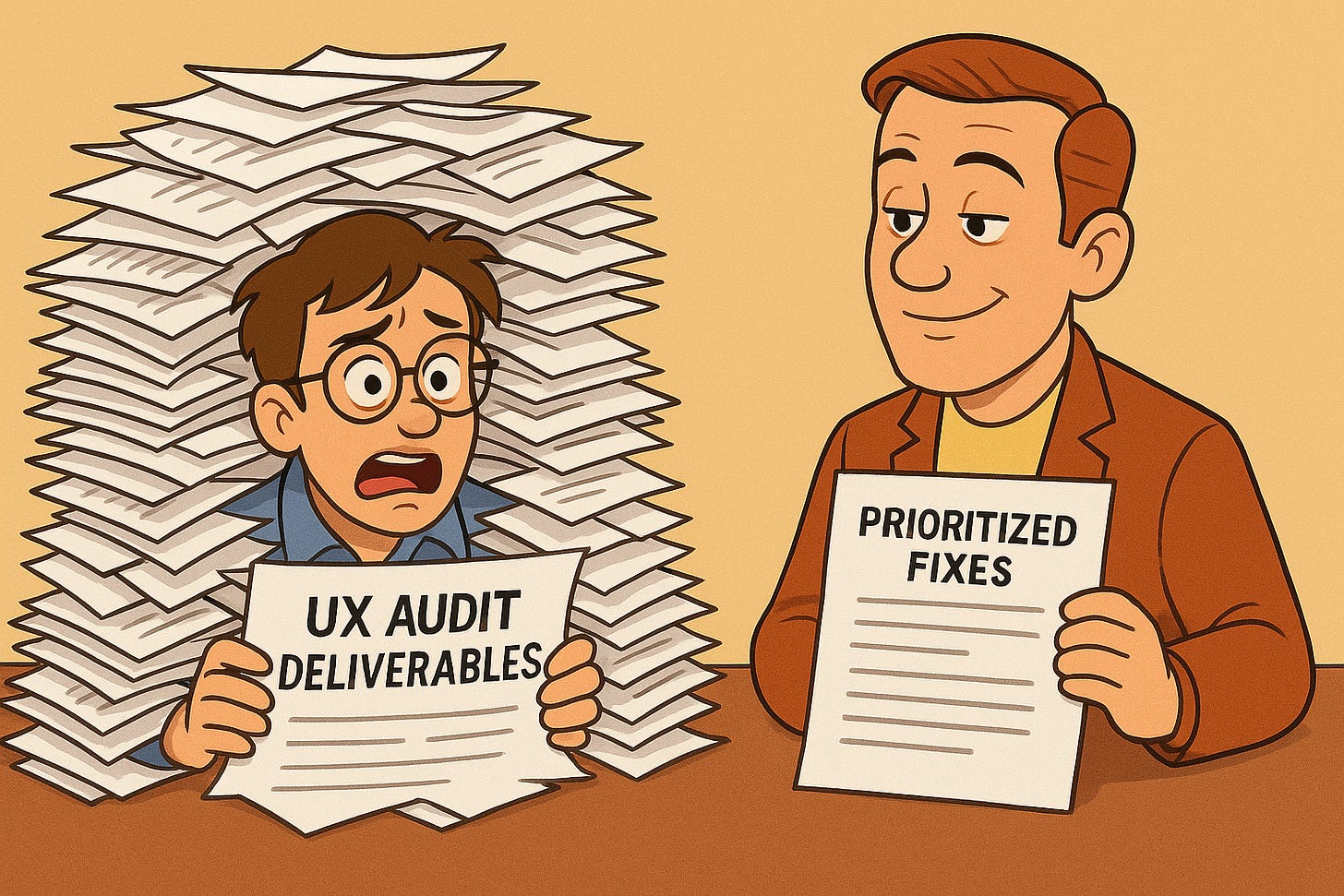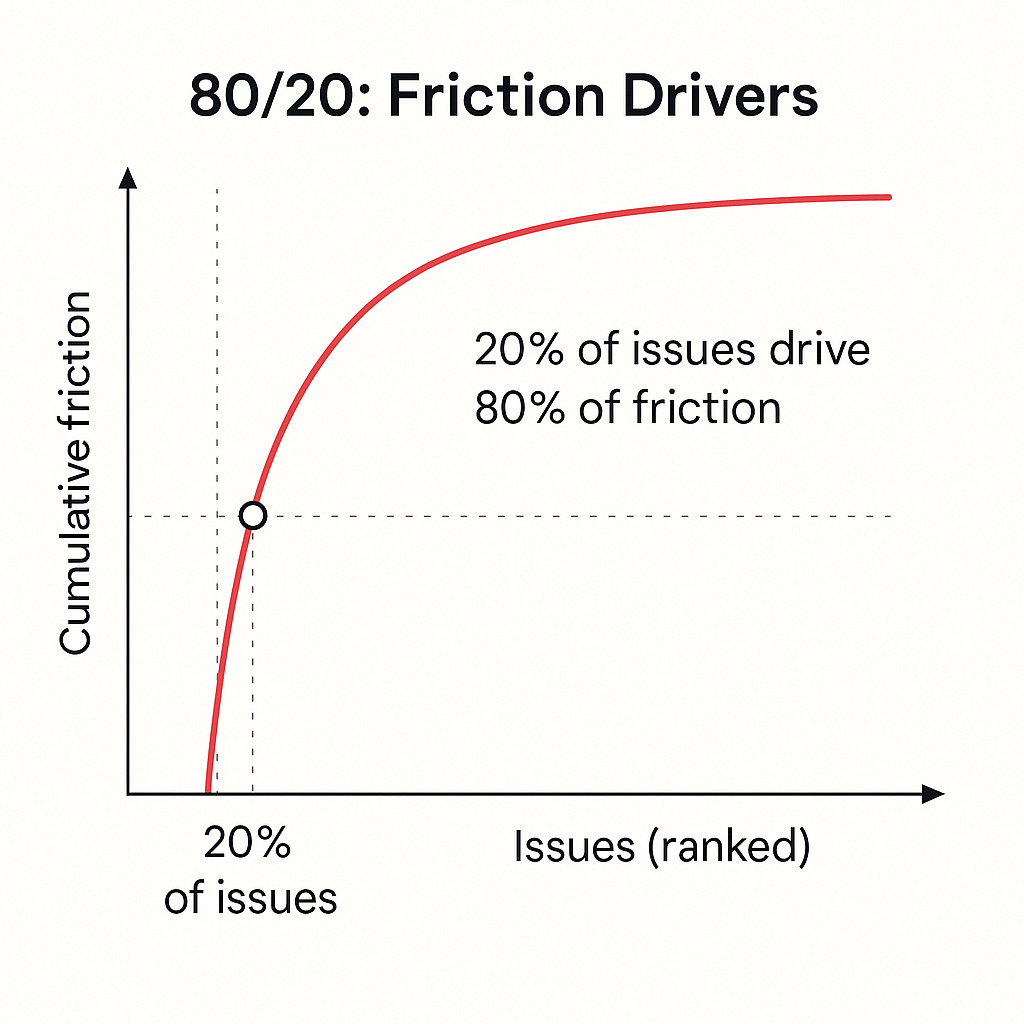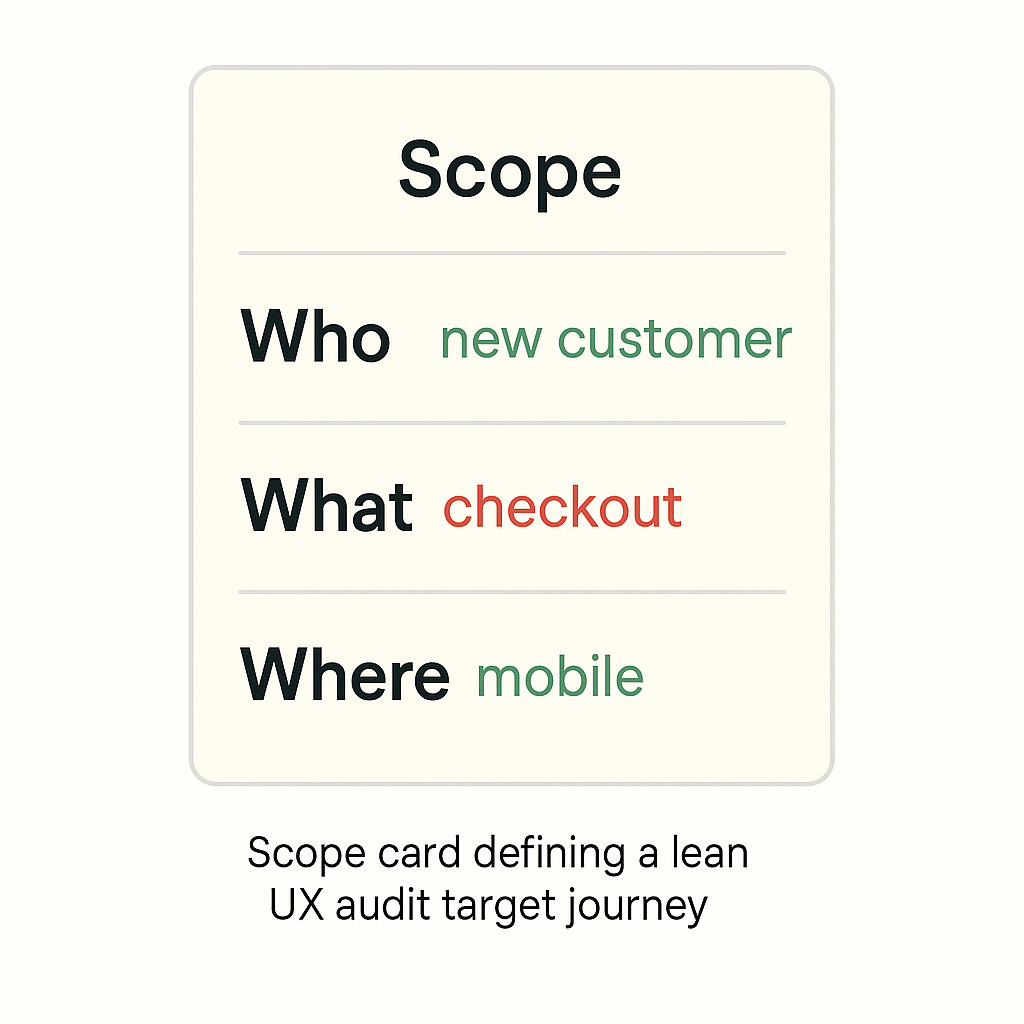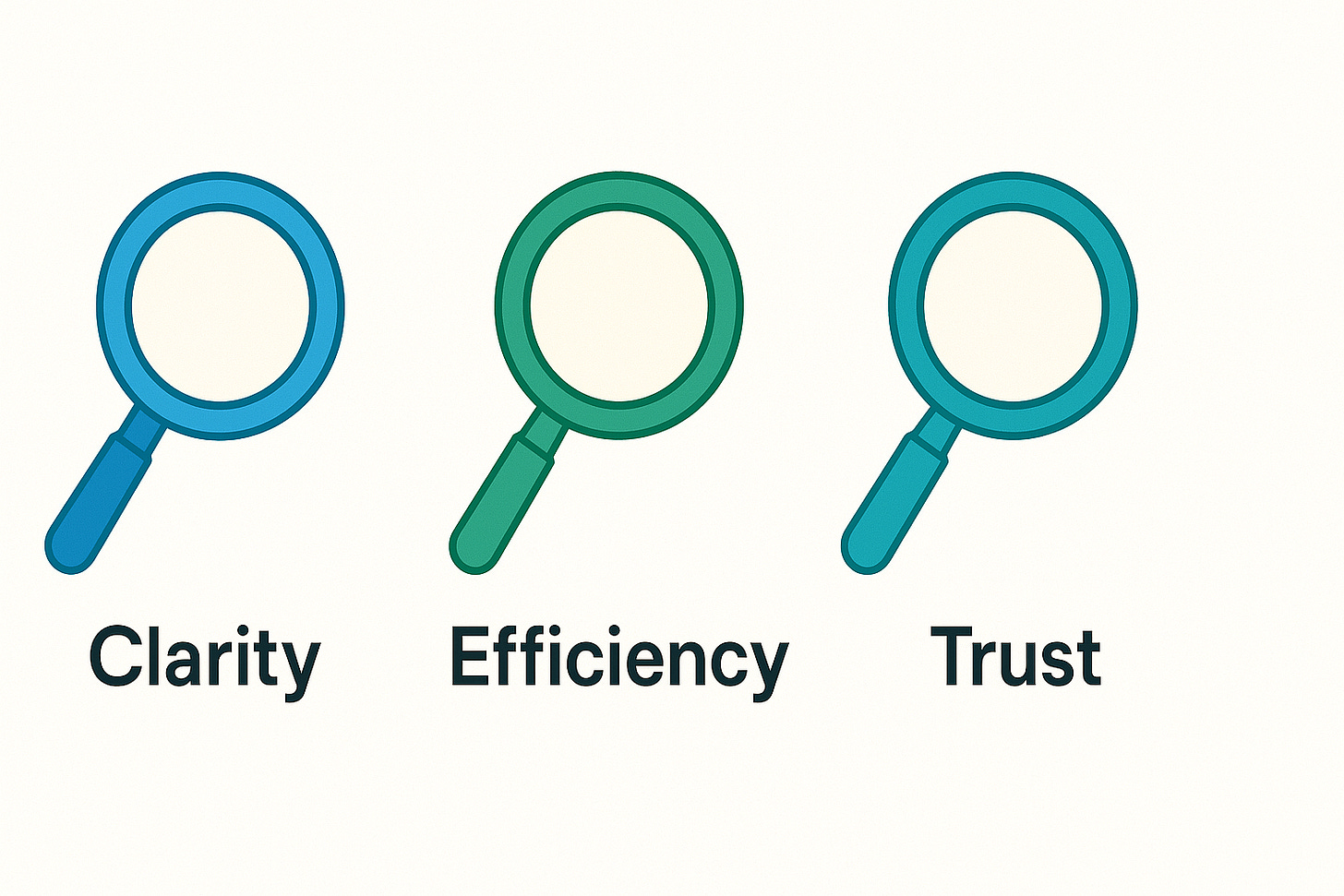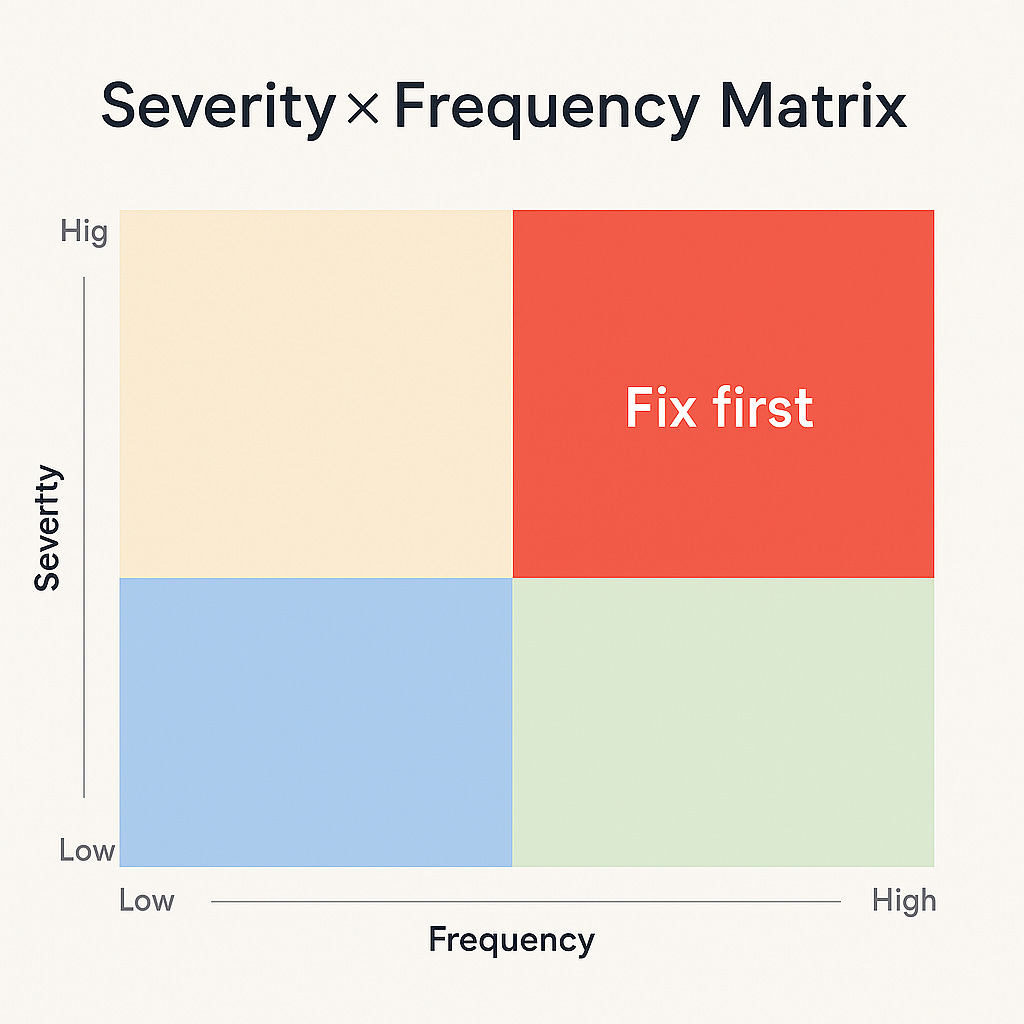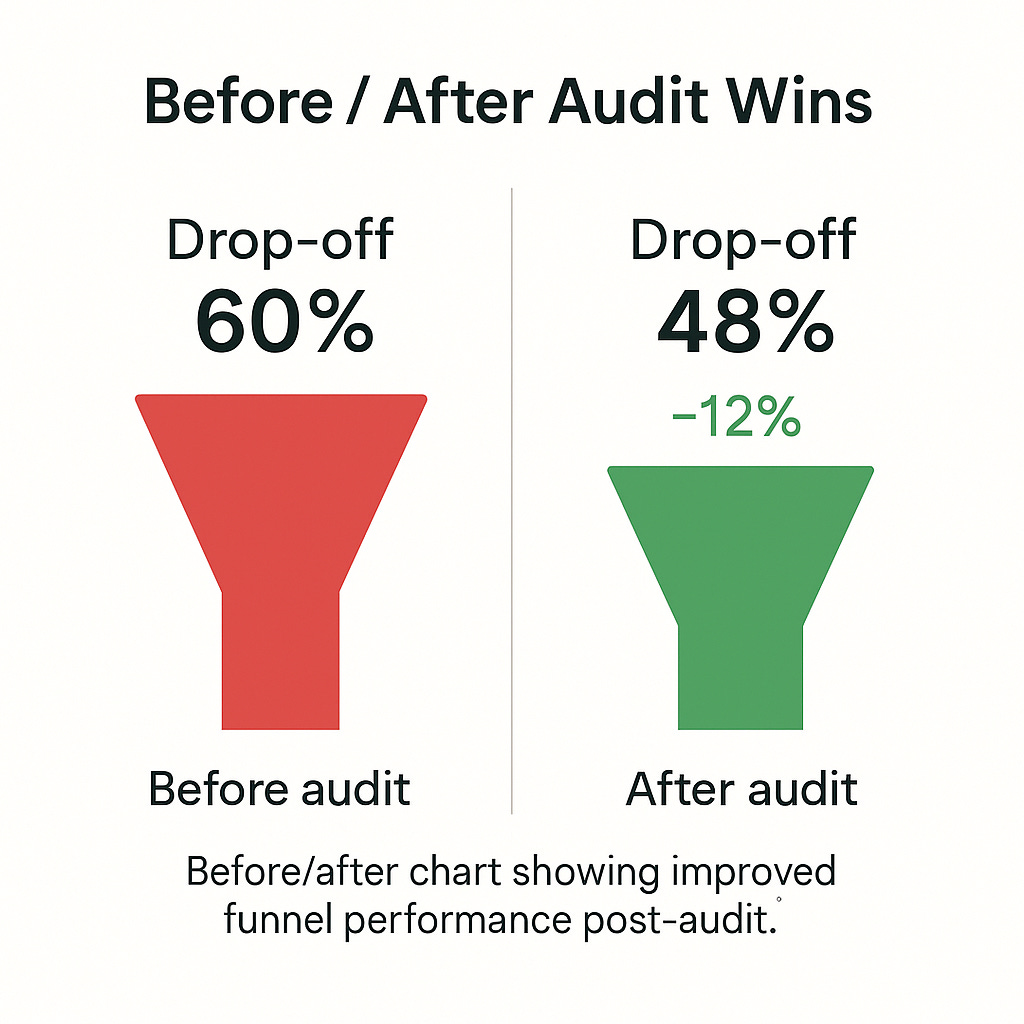How to Run a UX Audit Without Wasting Weeks
A lean framework to find what’s broken, prove it fast, and move on.
Too many teams treat UX audits like archaeological digs, endless screenshots, pages of notes, dozens of Figma frames… and no clear next steps.
The truth is: a good audit doesn’t need months.
It needs a clear framework, tight focus, and evidence you can explain in one meeting.
This issue breaks down a step-by-step lean UX audit framework you can run in days, not weeks.
In This Issue
Why Most UX Audits Fail
The Lean Audit Mindset
Step 1: Define the Scope in Plain Language
Step 2: Pick 3 Heuristics, Not 30
Step 3: Sample Real Flows, Not Every Page
Step 4: Capture Evidence With Screens + People
Step 5: Prioritize by Risk, Not by Volume
Step 6: Summarize in One Slide
Examples: Lean Audits That Worked
UXCON25 Spotlight: Audits That Drive Change
Resource Corner
Why Most UX Audits Fail
Too broad: Reviewing every page or screen instead of focusing on journeys.
Too slow: Weeks spent documenting, with no time left to fix.
Too abstract: Deliverables full of theory, no connection to outcomes.
Do this
Audit for decisions, not decoration.
Scope small, present fast, fix faster.
Avoid this
Multi-week screenshot hunts that nobody will read.
The Lean Audit Mindset
A lean audit is not about exhaustiveness, it’s about finding leverage points.
The goal is a short, prioritized list that moves the product forward.
✋ Hold up, hold up…
Before we go any further, let’s introduce someone you’ll want to hear from at UXCON25.
We’re thrilled to welcome Ned Dwyer, co-founder and CEO of Great Question.
His talk “Right Horses for the Right Courses: How & When to Democratize Research” takes on one of the biggest debates in UX today: who should really be running research? Should it be open to everyone, or stay tightly centralized?
Ned will share his perspective on finding the right balance, and how organizations can democratize research without falling into chaos. Expect insights that are practical, provocative, and rooted in real-world experience.
👉 Catch his session at UXCON25 and join the conversation on what democratization really means for research teams.
Okay…. Back to where we stopped
Step 1: Define the Scope in Plain Language
Frame the audit around user journeys, not site maps.
Example: “Let’s audit checkout on mobile for new customers.”
Step 2: Pick 3 Heuristics, Not 30
Choose three lenses that matter most:
Clarity (is it understandable?)
Efficiency (is it easy to complete?)
Trust (does it feel safe/credible?)
Step 3: Sample Real Flows, Not Every Page
Instead of reviewing every single screen in a product (which takes forever), focus on the critical user journeys, the paths that actually matter most to the business and to users.
For example:
Sign-up (how people create an account)
Checkout (how people complete a purchase)
Password reset (how people recover access when locked out)
These flows are where problems cause the biggest pain. If users fail here, nothing else in the app matters.
Step 4: Capture Evidence With Screens + People
Don’t just note “unclear copy.”
Add a screenshot.
Add a user quote.
Add a quick metric (completion time, error rate).
Step 5: Prioritize by Risk, Not by Volume
Rank issues on two axes:
Severity - how badly it blocks the task.
Frequency - how many users hit it
.
Step 6: Summarize in One Slide (and Speak to Business)
Final output = one slide:
Top 3 issues
Evidence (screenshots/quotes)
Impact (“could reduce drop-off 15%”)
Next steps
Examples: Lean Audits That Worked
E-commerce audit: Focused only on checkout. Found 2 blockers. Fix cut abandonment 12%.
SaaS audit: Scoped to onboarding. Found unclear copy + missing guidance. Fix raised activation 9%.
Nonprofit audit: Volunteer sign-up flow. Small fixes increased completions 2×.
👋 Hi again…
Quick question: how do you make UX audits useful instead of glorified shelf decor?
At UXCON25, we’ll dig into:
How one team slashed an audit cycle from 6 weeks to 6 days
Why business framing beats jargon every time
How leaders turn audits into roadmaps, not reports
Oh, and thanks to Great Question, tickets are now more wallet-friendly than ever.
Resource Corner
Final Thought
A UX audit doesn’t have to be a monster report.
Done right, it’s a short, sharp analysis that points the team at the 2–3 things that matter most.
Audit smarter, not longer.



